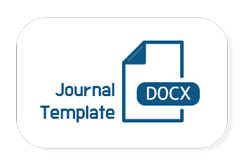Closing the Financial Literacy Gap: The State of Financial Education in the U.S. and a Path Forward
DOI:
https://doi.org/10.53935/26415305.v8i2.327Keywords:
Financial literacy, Financial educationAbstract
The United States faces a financial literacy crisis with widespread individual and societal impacts. Despite its importance for informed decision-making and economic well-being, financial literacy levels remain alarmingly low, with disparities across demographic groups such as women, minorities, and lower-income individuals. Current K-12 financial education efforts are inconsistent, with only a fraction of states mandating personal finance courses. Challenges such as inadequate teacher training, outdated curricula, and limited funding further hinder progress. This paper advocates for comprehensive financial education nationwide, starting in early grades and continuing through adulthood. Key recommendations include improved teacher training, culturally relevant curricula, and lifelong learning opportunities to address evolving financial complexities. Collaboration among schools, governments, businesses, and non-profits is critical to creating a robust financial literacy ecosystem. Addressing these gaps is essential to empower individuals, reduce economic disparities, and promote a more equitable and resilient financial future for all Americans.













